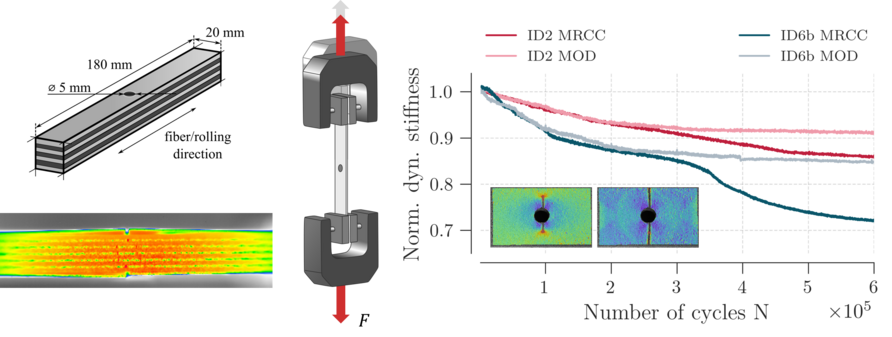Fiber metal laminates (FML) combine the high specific properties of fiber-reinforced polymers with the ductility and damage tolerance of metals. However, during the manufacturing process of FMLs, in-plane residual stresses arise in the single layers of the laminate. The stresses mainly originate from the different coefficients of thermal expansion of the two materials and lead to an inhomogeneous stress state in the thickness direction of the laminate. This work investigates the influence of such thermal residual stress (TRS) on the fatigue life in an FML by experimentally varying the TRS in identical layups using modified cure cycles. The experimental investigations show that the amount of TRS directly influences the fatigue performance of such laminates. Reducing the TRS, particularly the tensile residual stresses in the metal layers, slows the fatigue crack growth during cyclic loading. This leads to a significantly delayed crack initiation and slower crack propagation. Knowledge of material behavior is essential for utilizing the full potential of structural health monitoring (SHM) in component lifetime predictions. Predictive models require a set of input parameters to perform this task. Since the TRS in an FML significantly contributes to the component's fatigue life, its consideration in predictive approaches is inevitable. This finding is discussed based on a phenomenological damage accumulation model initially developed for composite materials.
J. Wiedemann, S. Mrzljak, C. Hühne, F. Walther
Increased accuracy of service life prediction for fiber metal laminates by consideration of the manufacturing-induced residual stress state
Proceedings of the 10th European Workshop on Structural Health Monitoring (EWSHM 2024), (2024) [Link]

